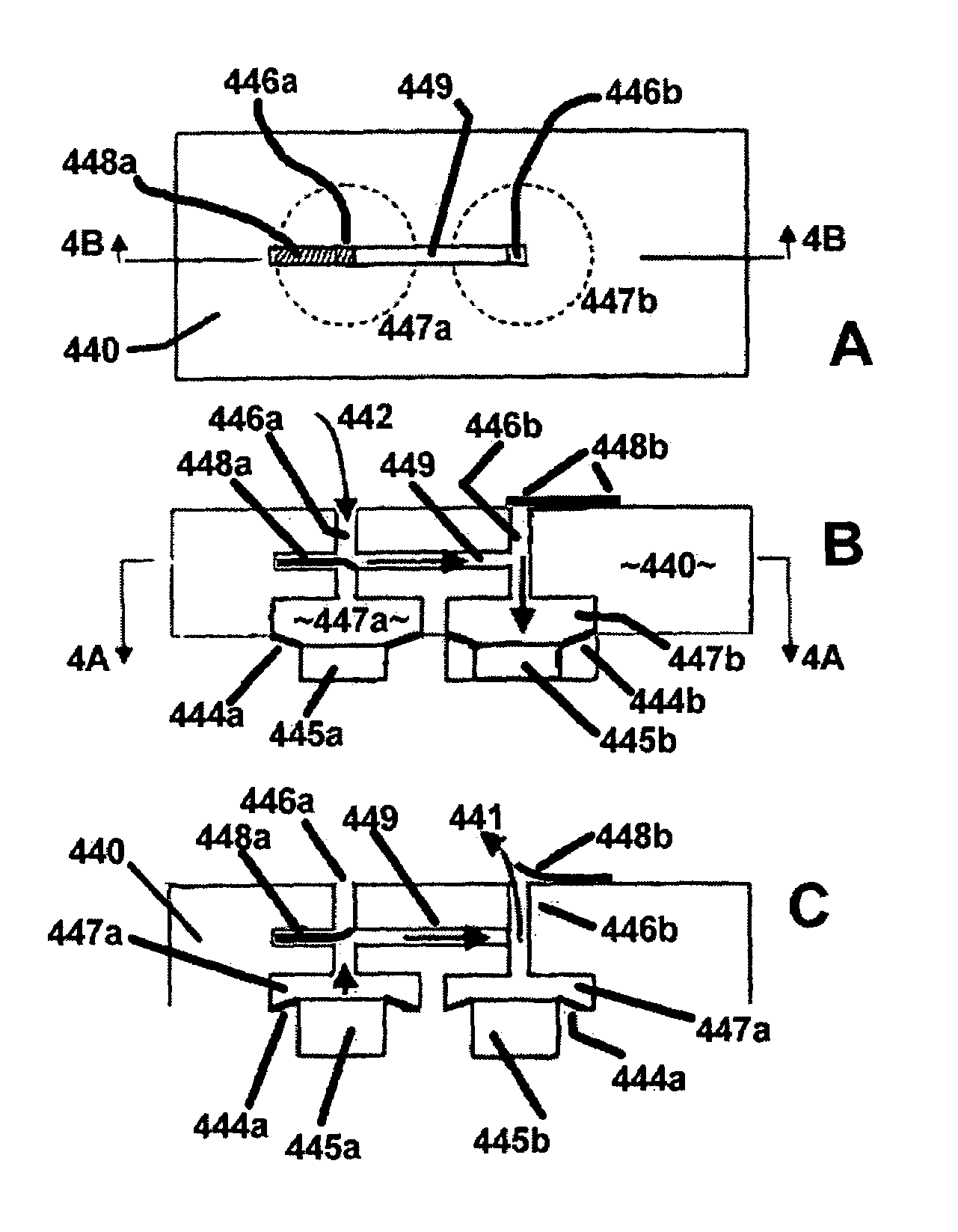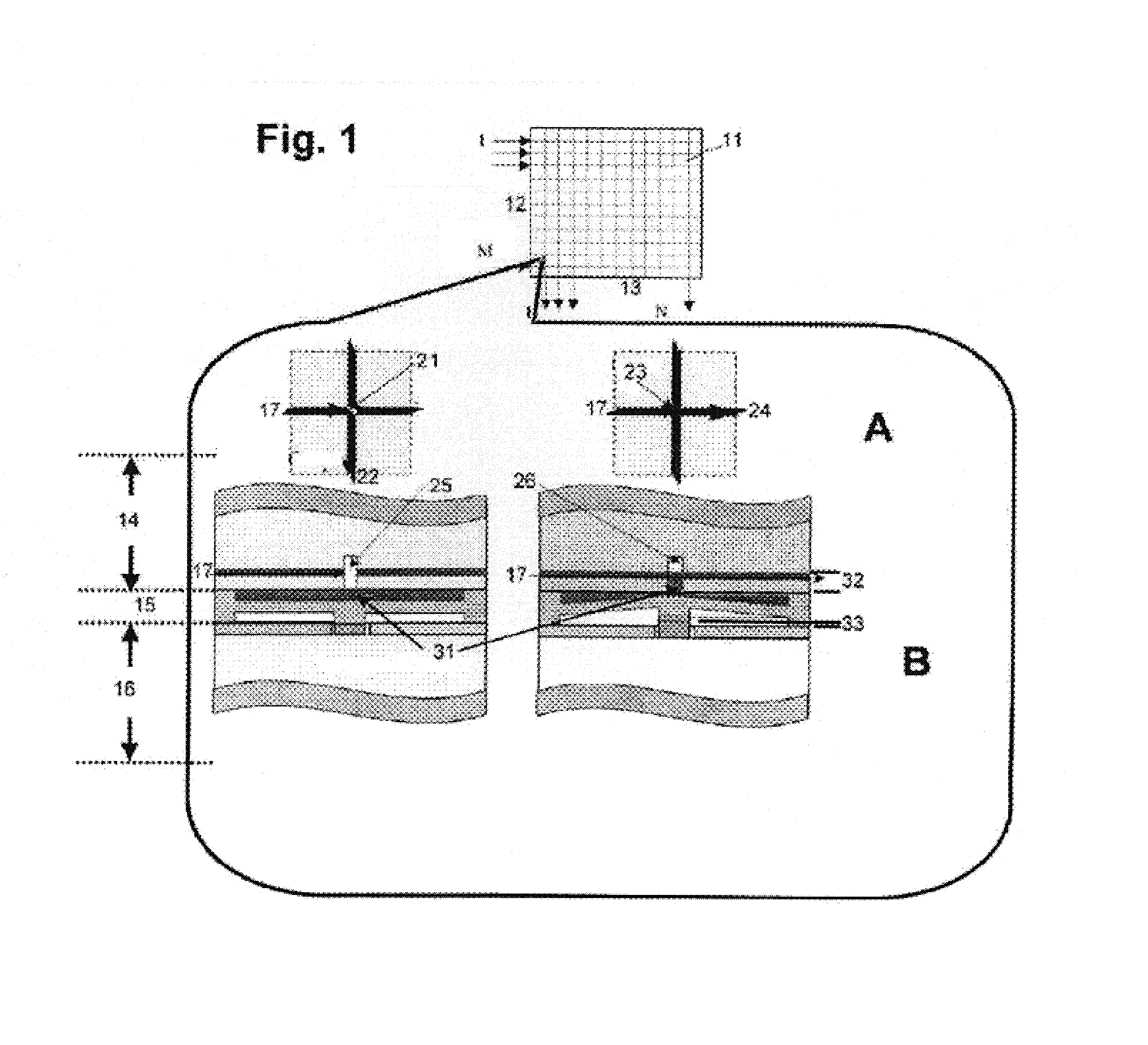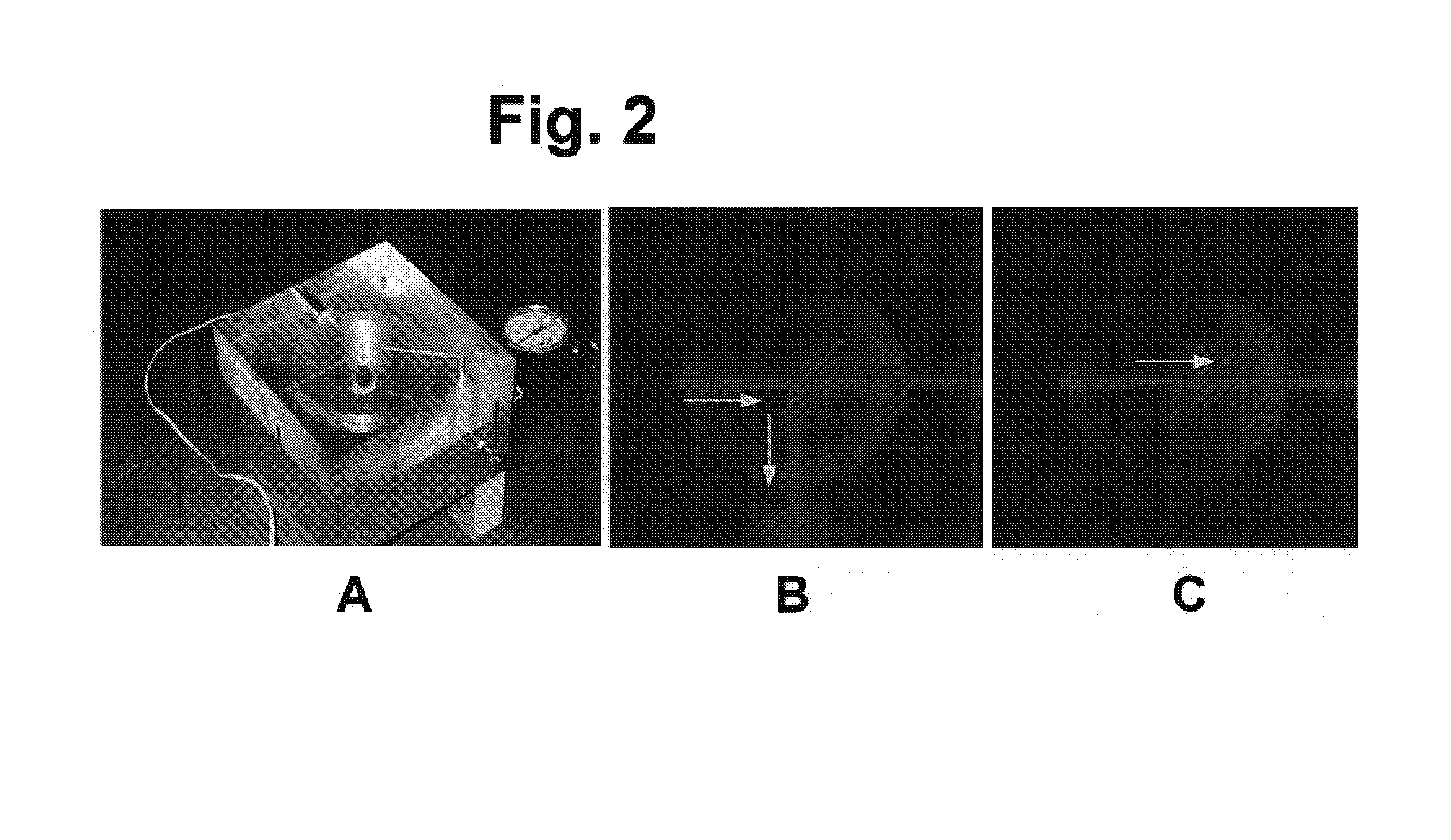Reciprocating microfluidic pump system for chemical or biological agents
a microfluidic pump and biological agent technology, applied in the direction of positive displacement liquid engine, pump, liquid fuel engine, etc., can solve the problems of not being able to achieve major advances in and the earlier efforts to achieve major advances in either miniaturization or biomedical applications. achieve continuous detection, prolong column length, and enhance potential
- Summary
- Abstract
- Description
- Claims
- Application Information
AI Technical Summary
Benefits of technology
Problems solved by technology
Method used
Image
Examples
first embodiment
[0052]FIG. 4 is a set of three cross-sectional views, all somewhat schematic or diagrammatic, of a first embodiment that is formed with one or more flappers, for directional flow control, and having a pair of actuator chambers with respectively associated pairs of wells and flappers, each chamber and well being generally analogous to the FIG. 3 single chamber and well—here the topmost or “A” view being in plan, taken along the line 4A—4A in the central or “B” view; and the central and lower, or “B” and “C”, views being taken along the line 4B—4B in the “A” view; and the “B” and “C” views showing the actuator retracted and extended respectively;
second embodiment
[0053]FIG. 5 is a set of three views, generally like those of FIG. 4 but of a second embodiment with flappers, and here having a single actuator chamber but a pair of wells—and with the “A” view being taken along the line 5A—5A of the “B” view, while the “B” and “C” views are taken along the line 5B—5B of the “A” view;
[0054]FIG. 6 is another three-view set, but of a third flapper embodiment, here having not only a single chamber but also a single flapper—and with the “A” view being taken along the line 6A—6A of the “B” view, while the “B” and “C” views are taken along the line 6B—6B of the “A” view;
[0055]FIG. 7 is a pair of diagrams, both highly schematic, that show exemplary preferred embodiments of the invention—the upper or “A” diagram representing a two- (sample and reference) fluorescence and / or polarization configuration of the invention; and the lower “B” diagram being two views of a chemistry / biology chip with a pump and waveguide system (the overall chip array 65 includes a...
PUM
 Login to View More
Login to View More Abstract
Description
Claims
Application Information
 Login to View More
Login to View More - R&D
- Intellectual Property
- Life Sciences
- Materials
- Tech Scout
- Unparalleled Data Quality
- Higher Quality Content
- 60% Fewer Hallucinations
Browse by: Latest US Patents, China's latest patents, Technical Efficacy Thesaurus, Application Domain, Technology Topic, Popular Technical Reports.
© 2025 PatSnap. All rights reserved.Legal|Privacy policy|Modern Slavery Act Transparency Statement|Sitemap|About US| Contact US: help@patsnap.com



